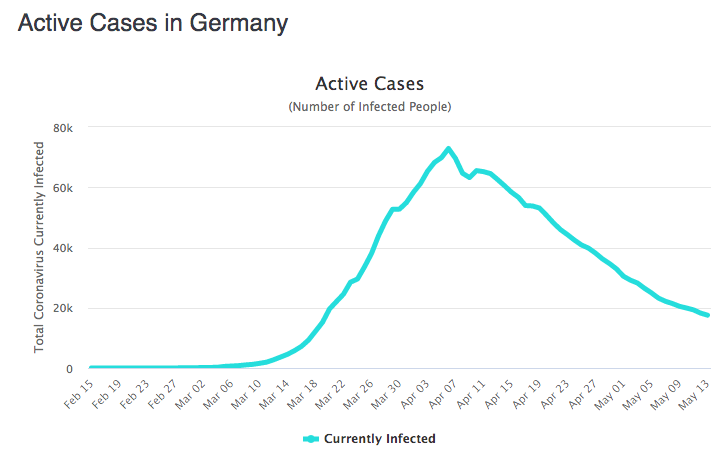Before beginning, note that David Siegel recently interviewed me:
https://www.youtube.com/watch?v=munQedJ7rSY
The following list is far from complete, but suggestive:
Countries with over 100 total reported cases, and none active:
Mauritius, Faeroe Islands
Countries with over 100 total reported cases, less than ten active:
Cambodia, Brunei, Montenegro, Trinidad
Countries with less than 100 reported active cases, falling rapidly:
Iceland, New Zealand, China, Hong Kong, Taiwan, Palestine (plus Montana, Alaska, Hawaii)
Countries with less than 200 reported active cases, falling rapidly:
Thailand, Luxembourg, Albania, Andorra
Countries with less than 1000 reported active cases, falling rapidly:
South Korea, Australia, Croatia, Lithuania, Tunisia
Countries with less than 2000 reported active cases, falling rapidly:
Switzerland, Austria, Denmark, Norway (probably, no hard data), Malaysia
Countries with less than 20,000 reported active cases, falling rapidly:
Germany, Japan, Ireland, Israel, Czechia
What can we infer from this list? Total caseloads in the US continue to rise (now over a million), although it’s starting to level off. Global totals also continue to rise. But there are many countries with fast falling caseloads, some approaching zero. And these countries are of all types: big & small, rich & poor, East & West, hot & cold, state capacity and state incompetence.
In a few weeks, almost all of these countries will have many fewer cases than they have right now. I’ll try to remember to revisit this list in mid-June. The world is dividing into two groups, the successful and the failed states. Sometimes (as in the USA) you have both types in the very same country.
PS. Of all the countries on my list, Germany has by far the biggest active caseload. But even its active caseload graph has the characteristic shape:

PPS. Countries on this list continue to see declining active caseloads even when hit by secondary waves, as in South Korea.